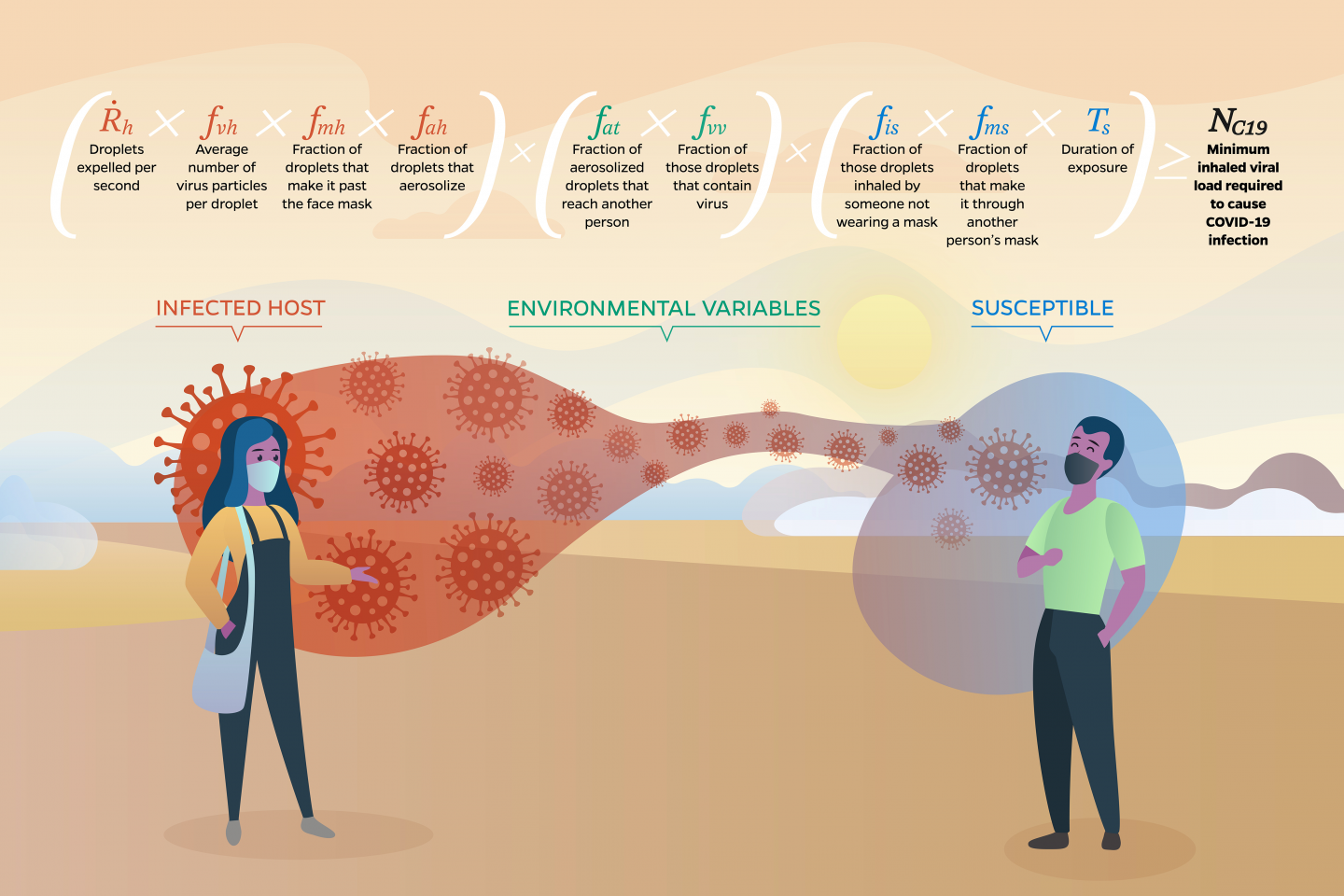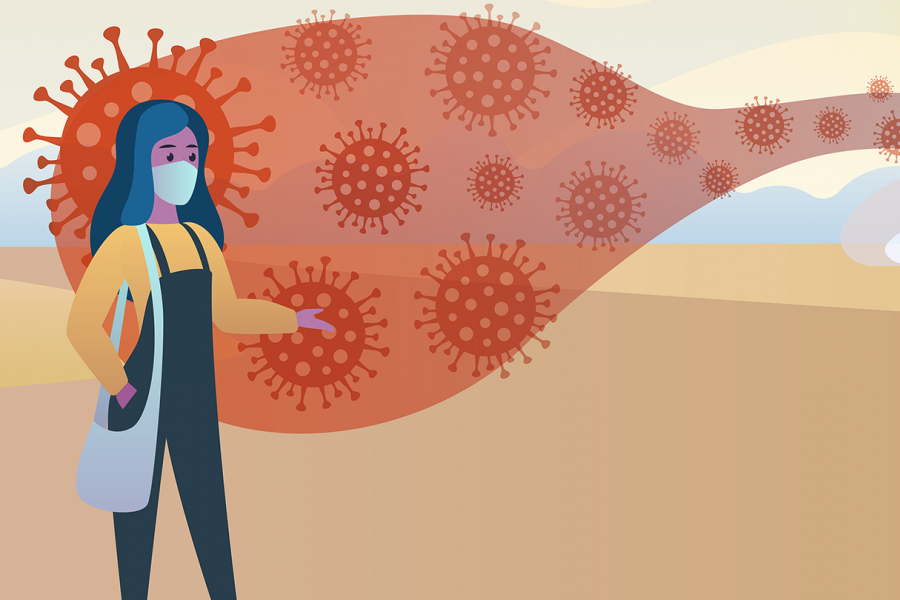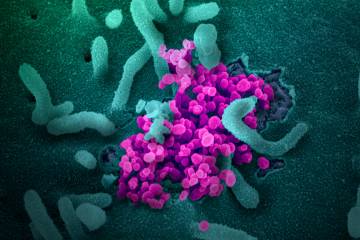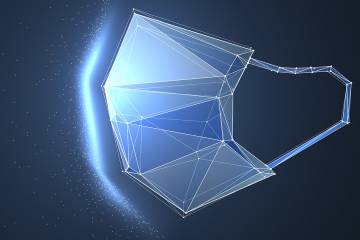What are the chances of finding advanced civilizations beyond Earth? In 1961, astronomer Frank Drake developed a mathematical formula to estimate the probability of finding intelligent aliens in the Milky Way. His simple equation, consisting of only seven variables, stimulated new discussion about an otherwise puzzling phenomenon. Decades later, his famous formula continues to influence the search for extraterrestrial life in the universe.
Inspired by the Drake equation, fluid mechanics experts from the Johns Hopkins Whiting School of Engineering have developed a formula to answer the question of the moment: What determines someone's chances of catching COVID-19?
In a paper published in the Physics of Fluids, the researchers present a mathematical model to estimate the risk of airborne transmission of COVID-19. Insights from this new model could help assess how well preventive efforts, like mask wearing and social distancing, are protecting us in different transmission scenarios.
"There's still much confusion about the transmission pathways of COVID-19. This is partly because there is no common 'language' that makes it easy to understand the risk factors involved," says Rajat Mittal, co-author of the paper and a professor in the Department of Mechanical Engineering. "What really needs to happen for one to get infected? If we can visualize this process more clearly and in a quantitative manner, we can make better decisions about which activities to resume and which to avoid."
What's becoming clear is that COVID-19 is most commonly spread from person to person through the air, via small respiratory droplets generated by coughing, sneezing, talking, or breathing, according to a commentary published by 239 scientists in Clinical Infectious Diseases.
But the risk of getting infected with COVID-19 depends heavily on the circumstances, Mittal says. The team's model considers 10 transmission variables, including the breathing rates of the infected and noninfected persons, the number of virus-carrying droplets expelled, the surrounding environment, and the exposure time. Multiplied together, these variables yield a calculation of the possibility that an individual will be infected with COVID-19.
The proposed formula is called the Contagion Airborne Transmission inequality, or CAT inequality for short.

Image caption:Read the screen reader version
Image credit: Marissa Lanterman / Johns Hopkins University
"The CAT inequality is particularly useful because it translates the complex fluid dynamical transport process into a string of simple terms that is easy to understand," says Charles Meneveau, a professor in Mechanical Engineering and co-author of the study. "As we've seen, communicating science clearly is of paramount importance in public health and environmental crises like the one we are facing now."
Depending on the scenario, the risk prediction from the CAT inequality can vary greatly. Take the gym, for example. We've all heard that exercising indoors at a gym can increase your chances of getting COVID-19, but how risky is it really?
"Imagine two people on treadmills at the gym; both are breathing harder than normal. The infected person is expelling more droplets, and the noninfected person is inhaling more droplets. In that confined space, the risk of transmission increases by a factor of 200," Mittal says.
The team adds that the model can be useful to quantify the value of mask wearing and social distancing. If both people are wearing N95 masks, the risk of transmission is reduced by a factor of 400—that's less than a 1% chance of getting the virus. But even a simple cloth mask will significantly reduce transmission probability, according to the model. The team also found that social distancing has a linear correlation to risk; if you double the distance, you double the protection factor, or reduce your risk by half.
As with most COVID-19 models, some variables are known and some are still a mystery. For example, we still don't know how many inhaled SARS-CoV-2 virus particles are needed to trigger an infection. Environmental variables, like wind or HVAC systems, are also tricky to pin down.
Even with these uncertainties, the researchers believe that their model provides a useful framework for understanding how our choices can increase or reduce our risk of getting the virus. Infectious disease models are usually designed to be understood by experts. The model developed by the team, on the other hand, is accessible to everyone, from scientists and policymakers to the average person trying to assess their own risk.
The team hopes that taking a simple mathematical approach to a complex problem will spur new conversations about COVID-19 transmission, just as the Drake model inspired new searches for intelligent alien life.
"With more information, you can calculate a very specific risk. More generally, our goal is to present how all these variables interact in the transmission process," Mittal says. "We think our model can inform future studies that will close these gaps in our understanding about COVID-19 and provide better quantification of all the variables involved in our model."
Wen Wu, an assistant professor of mechanical engineering at the University of Mississippi, is a co-author of this study.
Posted in Health, Science+Technology
Tagged mechanical engineering, rajat mittal, charles meneveau, coronavirus, covid-19










